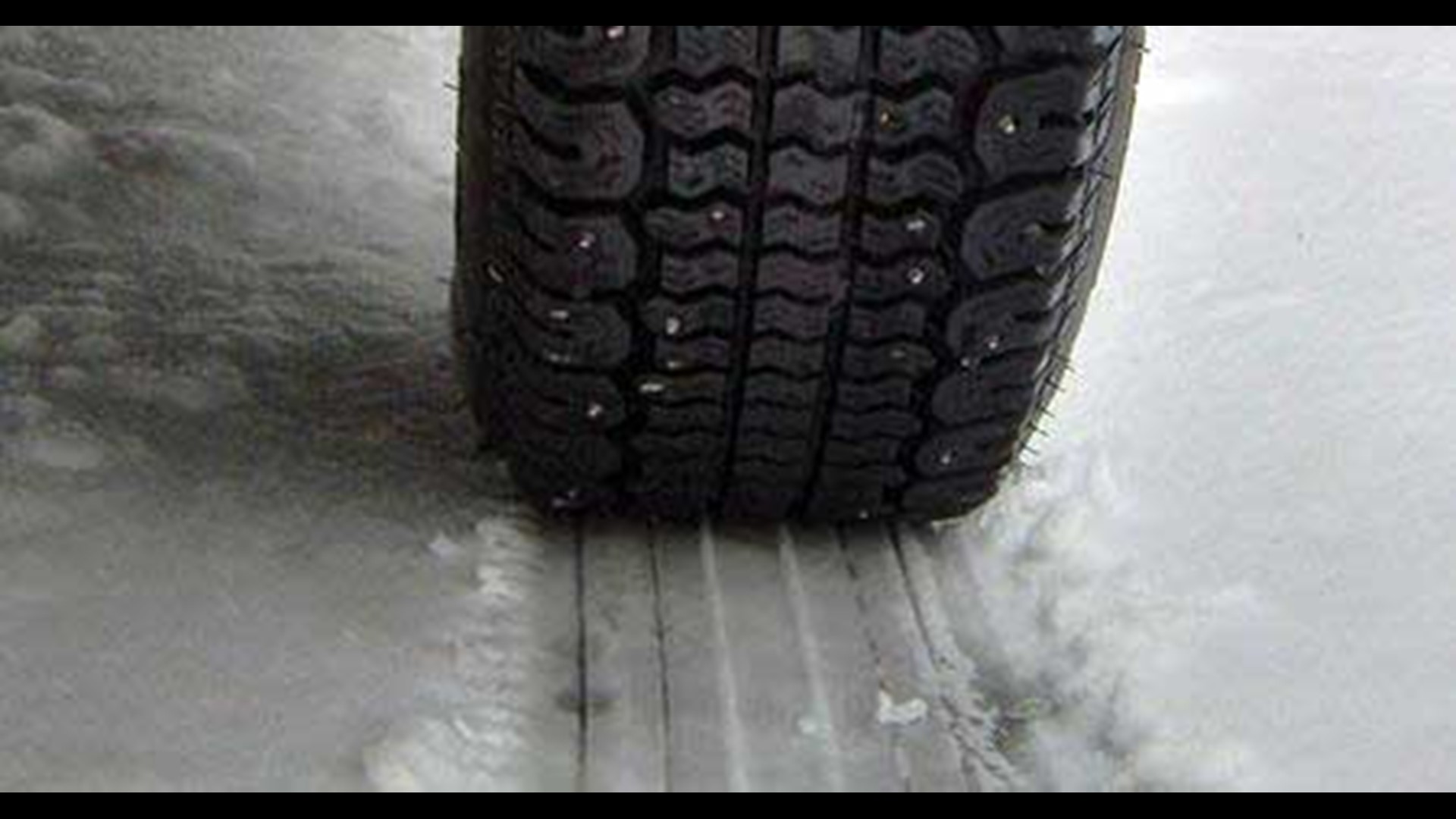DES MOINES, Iowa — As the winter months approach once again, it's often the time of year where Iowans start digging out their heavy coats, gloves and scarves.
One thing seems to be forgotten most of the time though: tire pressure, and how it is affected as temperatures outside get colder.
Put simply, as temperatures drop in the late fall and winter months, a tire's pressure decreases as well.
This is due to the proportional relationship between pressure and temperature.
Essentially, as temperatures decrease, pressure decreases as well. The opposite also holds true.
In colder temperatures, air molecules are typically moving slower, and have less impact, or pressure, on the walls of the tire.
Conversely, in warmer temperatures, air molecules are moving faster and have greater impact, or pressure, on the walls of the tire.
This simple physical relationship explains precisely why temperature drops lead to lower tire pressure readings.
For example, a 10° drop in outside temperature can lead to a drop of 1-2 PSI (pounds per square inch) of tire pressure. When a drop in tire pressure of this magnitude occurs, most vehicles display a warning light until the pressure is returned to its recommended level.
Low tire pressure causes a number of issues for drivers, so it is important to keep it in check at all times.
When the tire pressure is lower than a car manufacturer's recommendations, it can lead to poor fuel economy, poor vehicle handling, shorter tire lifespan and a much higher likelihood of a flat tire.
Reduced tire pressure can also increase the amount of time it takes for a car to stop, which can pose big risks in snowy, icy, or rainy conditions.
Given these potential hazards, it is important to double-check a car's tire pressure in each tire regularly throughout the cold winter months.
Taking five minutes to do so may cut down on big hassles later on.

